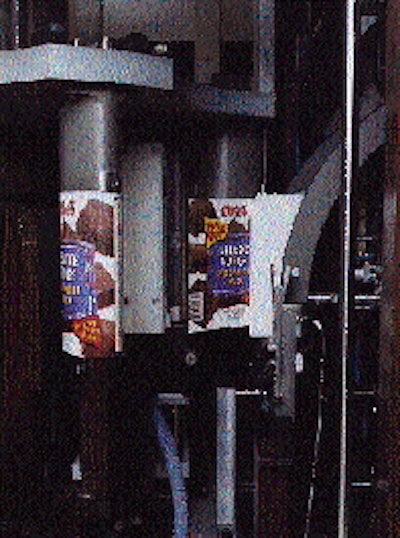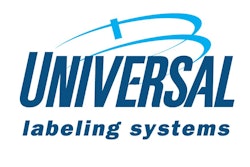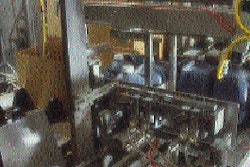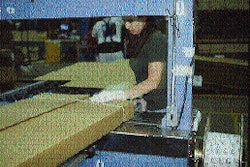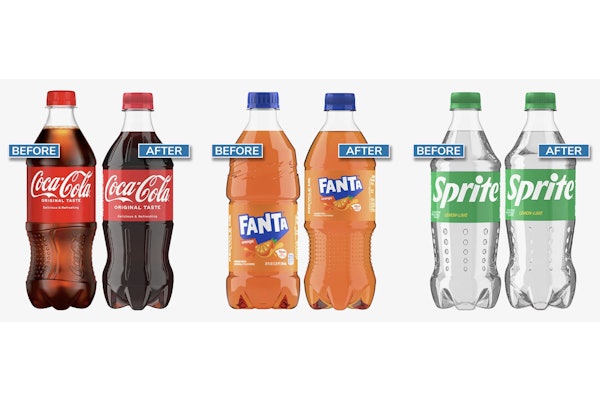When it first reached store shelves last November, Obie's instant cookie mix had a different name and it came in a different container. Because its current paperboard package is so unusual, prototype equipment had to be developed. Then further changes came in March of this year, when Delicious Frookie of Des Plaines, IL, bought the Seattle area firm that had launched the all natural, health-oriented line. With all that in the past, Obie's cookie mix is now poised for takeoff.
"We'll increase the scale of the business significantly," says Delicious Frookie president Phil Roos. "Our distribution system gets our products into 75% of the nation's supermarkets and 80% of the health food stores."
A Skyrocket launch The Obie's line was launched by Jeff Caden of Skyrocket Foods, Bainbridge Island, WA. Caden felt that snack and cookie products having no or low fat would appeal to today's increasingly health-conscious consumers. But unlike the others already available, Caden's is offered as a powdered mix, which permits it to capitalize on two other food trends. The first is "neotraditionalism," an interest in returning to foods prepared in the home, as long as they're convenient. Second is the demand for value. As the package copy states, "Enjoy home-baked goodness in a granola bar at half the price of many packaged bars."
Since Caden was bringing a new product to the cookie mix category, he wanted a different package, too, something other than the bag-in-carton approach taken by Betty Crocker et al. Yet he needed to keep the same height as the competition's packages or his product would get lost on the shelf.
He selected the round Ultrakan® from Huhtamaki (Overland Park, KS). At 7" tall and 4" in diameter, the brightly decorated container commanded plenty of attention on the retail shelf. It also permitted Caden to call his product "Obie's Cookie Jar," and package copy instructed consumers how to use the canister as a cookie jar after the cookies were baked.
The problem with this cookie jar approach was that the package had so much head space, it wasn't perceived as being 'green' enough. Not only were consumers worried about overpackaging, they also wondered if the package was filled to its proper level. So Caden started searching for a nonround container, one that would have less head space yet could maintain its height and full shelf presence.
New package His search led him to the same container vendor but to a newly available package, Huhtamaki's Vektor(TM) packaging. Like the Ultrakan, a Vektor package is made from flat, preprinted, paperboard blanks. But while Ultrakans are always round, the Vektor package can take a variety of shapes. Caden chose oval.
He also chose a specialized EZO® ring-pull top supplied by Double H Plastics (Warminster, PA). That firm uses "insert" injection-molding technology to mold a polypropylene rim, ring pull included, around a paperboard insert. When the ring is pulled, a thin strip of plastic breaks cleanly away from the rest of the rim, and the paperboard insert stays with it. That's how the container is opened.
The final component to the package is a snap-fit overcap, also insert injection-molded of paper and PP by Double H. Double H joins the overcap and the EZO component into a single fitment before shipping it to the Roman Meal plant in Fargo, ND, that's responsible for contract packaging the Obie's line.
At Roman Meal, container bodies are formed from two flat blanks, one for the sidewall and one for the bottom, on a Huhtamaki Vektor 1600 system, Model 65V. The blanks are polyethylene-coated 21-pt paperboard, and the sidewall blank is printed offset by Huhtamaki in five or six colors, depending on cookie variety.
Forming is an intermittent-motion process. First the sidewall blank is picked by vacuum cup from its magazine. It's rotated to a heating station that blows hot air on the inside of the leading edge and the outside of the trailing edge to melt the polyethylene. Then the blank is placed on a forming mandrel and wiper arms press it around the mandrel. This gives it its oval shape. The longitudinal seam is made by a clamp that presses on the seam area, thus bonding the leading and trailing edges.
Still held by the mandrel, the sidewall blank, now effectively a cylinder, is brought to the station in which it gets its bottom. The bottom is also magazine fed and heat sealed in place. Then the finished piece exits onto a discharge conveyor that takes it to an auger filler. After the filler is a second Huhtamaki system that applies hot melt adhesive carefully around the inside top edge of each container. Finally, the EZO fitment is picked from a magazine feed and applied over the hot melt, bonding fitment to container body.
Second commercial user The Obie's line is only the second product to utilize Huhtamaki's Vektor packaging technology, and it's the first to incorporate the EZO end. The other packager using Vektor technology heat seals a polyester membrane to the PP rim and then applies a snap-fit overcap.
The equipment that applies the EZO end plus overcap was developed specially for the Obie's application. While Huhtamaki was building it, Roman Meal workers relied upon a prototype system from Huhtamaki to apply the EZO end and then applied the overcap manually. The fully automated system has been running at Roman Meal since January. Throughput is in the range of 65 containers/min.
Though initially the Obie's line was available only through health food stores, it's now appearing in mainstream supermarkets, where typically the 16-oz package sells for about $2.99. The acquisition of the Obie's brand by Delicious Frookie will quickly increase the number of markets in which it can be purchased.
According to Roos, the unusual package was among the things that made the Obie's line so attractive. "I think it's a terrific package," says Roos. "Not only is it eye-catching, it's functional."
Caden, who remains involved with the Obie's line as a consultant to Frookie, says the new Vektor package with its EZO end is probably about 20% more costly than the more conventional Ultrakan container that it replaced. But he believes it's a premium worth paying considering how neatly it managed to reduce his package's head space without sacrificing shelf impact.
